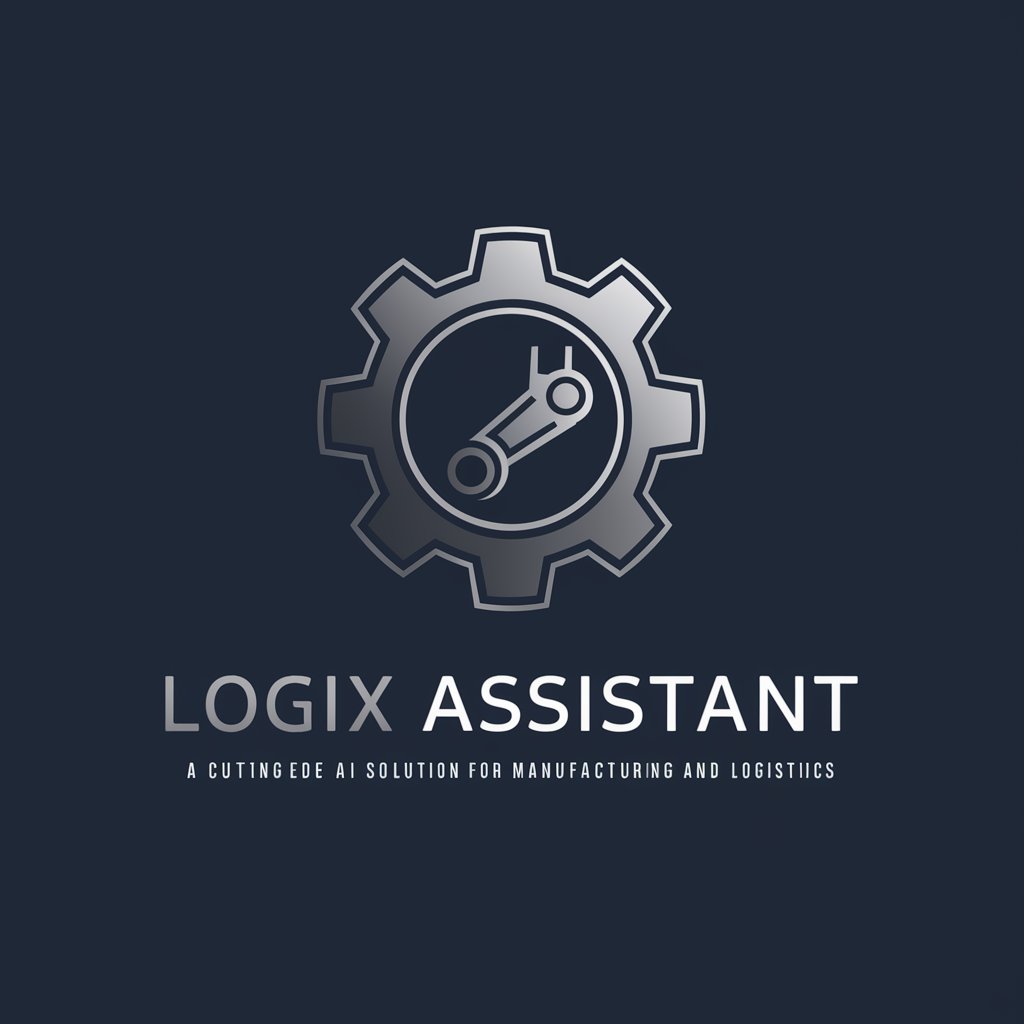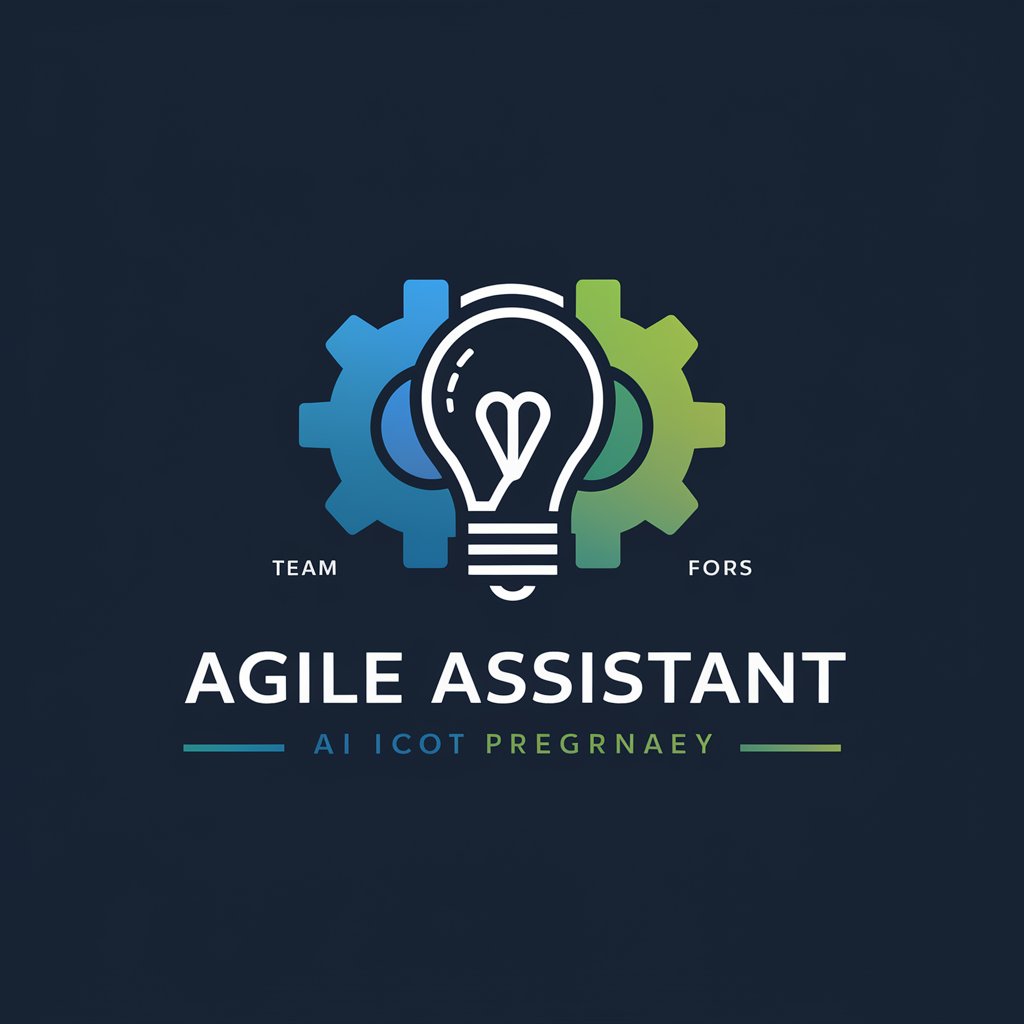
Logix Assistant - AI-Powered Logistics Tool

Welcome to Logix Assistant, your partner in manufacturing and logistics efficiency.
Optimize Operations with AI Insight
How can Logix Assistant optimize our supply chain management?
What are the best practices for cost reduction in manufacturing according to Logix Assistant?
How can we improve our logistics operations with the help of Logix Assistant?
What recommendations does Logix Assistant have for enhancing material procurement?
Get Embed Code
Overview of Logix Assistant
Logix Assistant is designed as a specialized assistant for industries involved in manufacturing and logistics. It focuses on providing detailed insights and recommendations related to commercialization, emphasizing materials management, cost efficiency, and supply chain optimization. This assistant is crafted to help users navigate the complexities of production and distribution without real-time data integration or predictive analytics capabilities. Instead, it utilizes historical data and industry benchmarks to simulate scenarios and offer practical advice. Examples of its application include scenario planning in supply chain disruptions or optimization of inventory based on past consumption patterns. Powered by ChatGPT-4o。

Core Functions of Logix Assistant
Supply Chain Analysis
Example
Analyzing the impact of supplier delays on production schedules and proposing adjustments.
Scenario
In the automotive industry, Logix Assistant can evaluate alternative suppliers or adjust production timelines when a key component supplier faces delivery delays.
Cost Reduction Strategies
Example
Identifying areas where production processes can be streamlined to reduce costs.
Scenario
For a furniture manufacturer, Logix Assistant might suggest changes to material sourcing or recommend less costly alternatives that meet quality standards.
Inventory Optimization
Example
Using historical sales data to recommend inventory levels that minimize overstock and understock situations.
Scenario
In retail, the assistant could forecast optimal stock levels for seasonal products, preventing overproduction and excessive markdowns.
Operational Efficiency Improvement
Example
Providing insights on workflow enhancements that reduce waste and increase throughput.
Scenario
In a pharmaceutical plant, Logix Assistant could advise on the reorganization of the production floor to streamline the movement of materials and finished goods.
Target User Groups for Logix Assistant
Manufacturing Managers
Managers who oversee production processes benefit from Logix Assistant’s ability to provide detailed, scenario-based recommendations that improve efficiency and reduce costs.
Supply Chain Analysts
These professionals use Logix Assistant to simulate various supply chain scenarios and make informed decisions to optimize logistics and distribution strategies.
Operations Executives
Executives in operations benefit from the strategic insights offered by Logix Assistant, helping them to make higher-level decisions that align with company goals and market conditions.
Quality Assurance Teams
Teams focused on maintaining product quality use Logix Assistant to analyze historical defect data and identify trends or areas of improvement in manufacturing processes.

How to Use Logix Assistant
Access Free Trial
Visit yeschat.ai to start using Logix Assistant with a free trial, no login or ChatGPT Plus required.
Identify Needs
Determine your specific needs related to manufacturing and logistics to tailor the use of Logix Assistant effectively.
Interact and Query
Use the text-based interface to ask questions or request simulations related to logistics, supply chain, or production issues.
Apply Insights
Implement the insights and recommendations provided by Logix Assistant to optimize your operational strategies.
Evaluate and Iterate
Regularly evaluate the outcomes and refine your queries based on new challenges and evolving business needs.
Try other advanced and practical GPTs
Historical Scenario Explorer
Rewrite history with AI-driven insights

Blog Post Summarizer
AI-driven insights from lengthy posts

Liverpool Expert Guide
Explore Liverpool with AI-powered expertise

معلم خصوصی اسپانیایی
Master Spanish with AI Guidance

AMP - صانع قائمة تشغيل الموسيقى العربية
Crafting Personalized Arabic Music Experiences with AI

Personal Russian Tutor
Learn Russian with AI-Powered Guidance

Mente Serena
Cultivate serenity with AI-powered guidance

Προσωπικός Καθηγητής Ολλανδικών
Master Dutch with AI Guidance

Resume Builder
Craft Your Success with AI

Eco Sage
Your AI-Powered Guide to Greener Living

Adolescent Health Advisor
AI-powered adolescent health insights.

Love Share ♥
Spreading Love with AI Innovation

Frequently Asked Questions about Logix Assistant
Can Logix Assistant integrate with my existing ERP systems?
Logix Assistant doesn't directly integrate with external systems but can assist in analyzing and planning around data you input manually.
What kind of data inputs are most useful for Logix Assistant?
Effective data inputs include inventory levels, supplier data, production schedules, and logistics costs to help optimize operations.
How secure is Logix Assistant with proprietary information?
Logix Assistant prioritizes data security and privacy, providing general recommendations without storing sensitive user information.
Can this tool help with cost reduction strategies?
Absolutely, it can simulate various cost scenarios and provide strategies for minimizing expenses in supply chain and production processes.
How can Logix Assistant improve my supply chain visibility?
It provides analytical insights and recommendations based on your supply chain data, helping identify bottlenecks and improvement areas.





